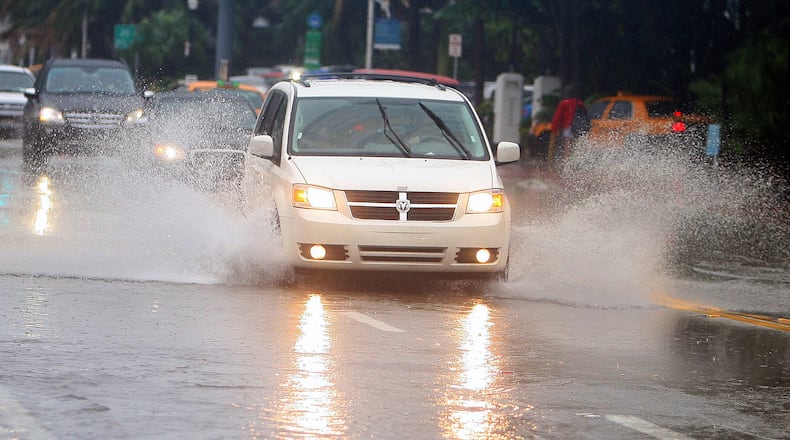Why, oh why do drivers turn on their flashers during a storm? Do they think it enhances their visibility? Do they think they are emitting a safety alert? Do they think they are erecting a force field around their car that will prevent them from being rear-ended?
They would be wrong on all counts. In fact, hazard lights worsen the danger of driving in a downpour. Driving with your hazard lights on is also illegal in Florida — and in most states — punishable by a $129 fine. The only time you can use them when in motion is if the vehicle is in a funeral procession.
“Hazard lights are just that — the signal of a hazard, and you use them when you have pulled over to the side of the road or are disabled or in an accident,” said Matt Nasworthy, American Automobile Association public affairs director for Florida. “You cannot use them when you’re moving. It only causes confusion. Other drivers have no idea what you’re doing.”
But if you live in South Florida, you’re accustomed to the automatic reaction of certain panicked, misinformed drivers who assume the protocol during rainy weather is to turn on their flashers. To educate those drivers, the Miami-Dade Expressway Authority has used its message boards to warn against turning on hazards in the rain.
“The other day I was in my car, it was raining, and everyone around me had their hazard lights activated,” said Florida Highway Patrol Lt. Alex Camacho. “So while I’m patrolling, how am I going to see the one person who may have a true hazard? The main problem from my perspective is I’ll never know who is really in distress if everybody has them on.”
Flashing hazard lights actually reduce visibility, making it difficult for other drivers to see your turn signal or brake lights or causing them to think you are stopped or stalled in the roadway.
“If your lights are indicating some kind of emergency, the drivers following you don’t know whether to slam on the brakes or swerve around you,” Nasworthy said. “You may think you’re being cautious but you’ve misinterpreted the purpose of hazard lights.”
Conversely, a car that is legitimately stalled with lights flashing may get rammed in the back end by a driver who doesn’t anticipate proper braking distance because he thinks the car is moving, Camacho said.
“When it’s raining, don’t make sure your hazards are on; make sure your headlights are on,” he said.
And don’t switch to high beams in rainy or foggy conditions “because the light will reflect back and cause glare,” Nasworthy said.
Be considerate of visiting drivers, who not only are not used to our monsoons but aren’t quite sure what to make of all the flashing hazard lights. Maybe they think a lot of people are on their way to a lot of funerals.
About the Author
